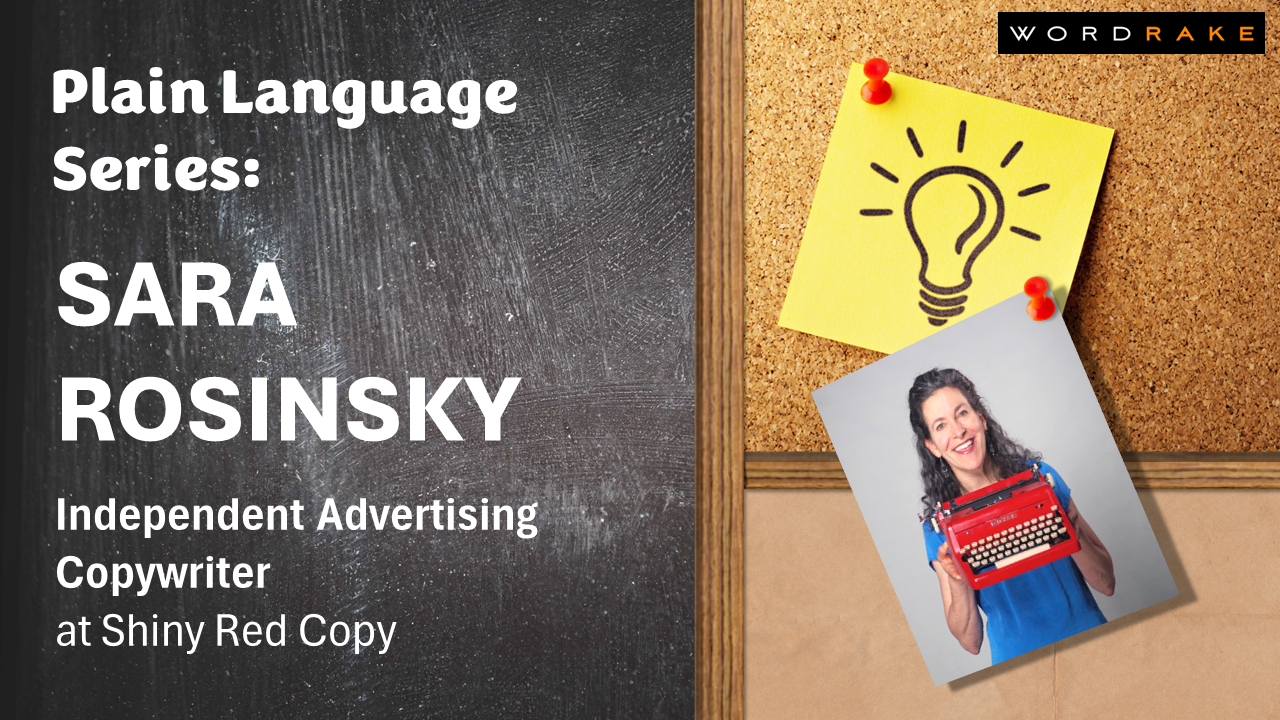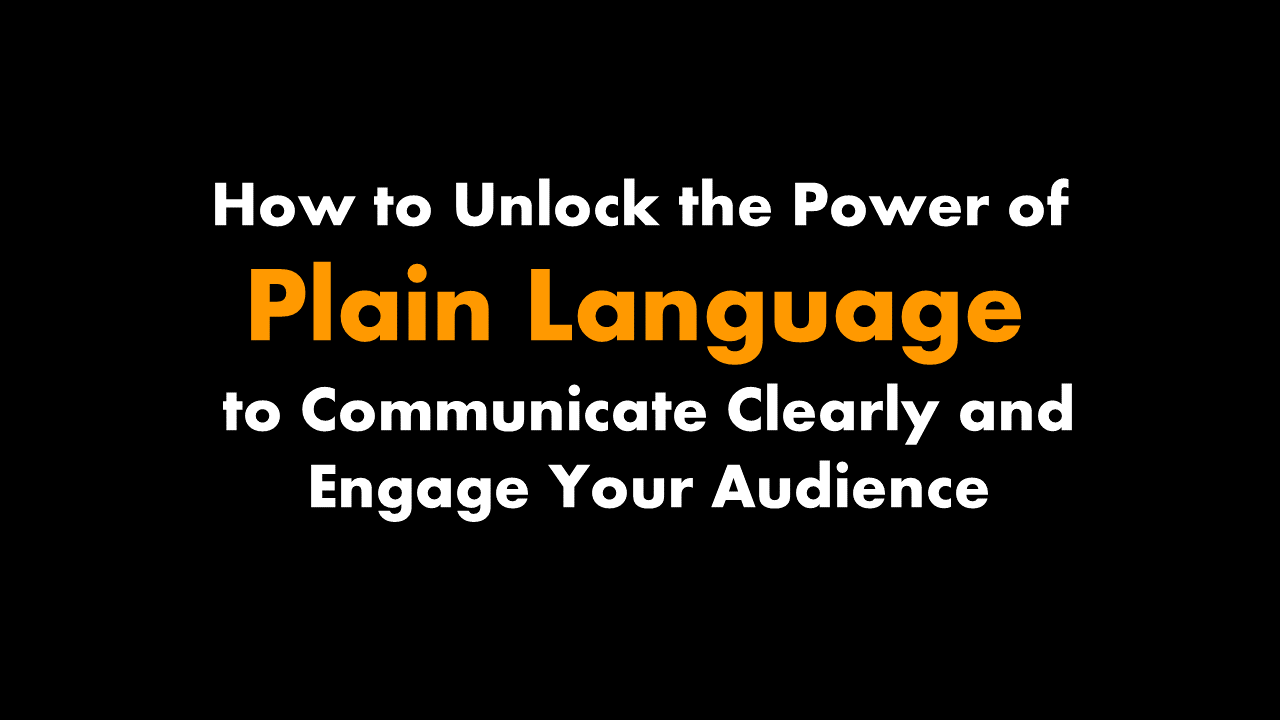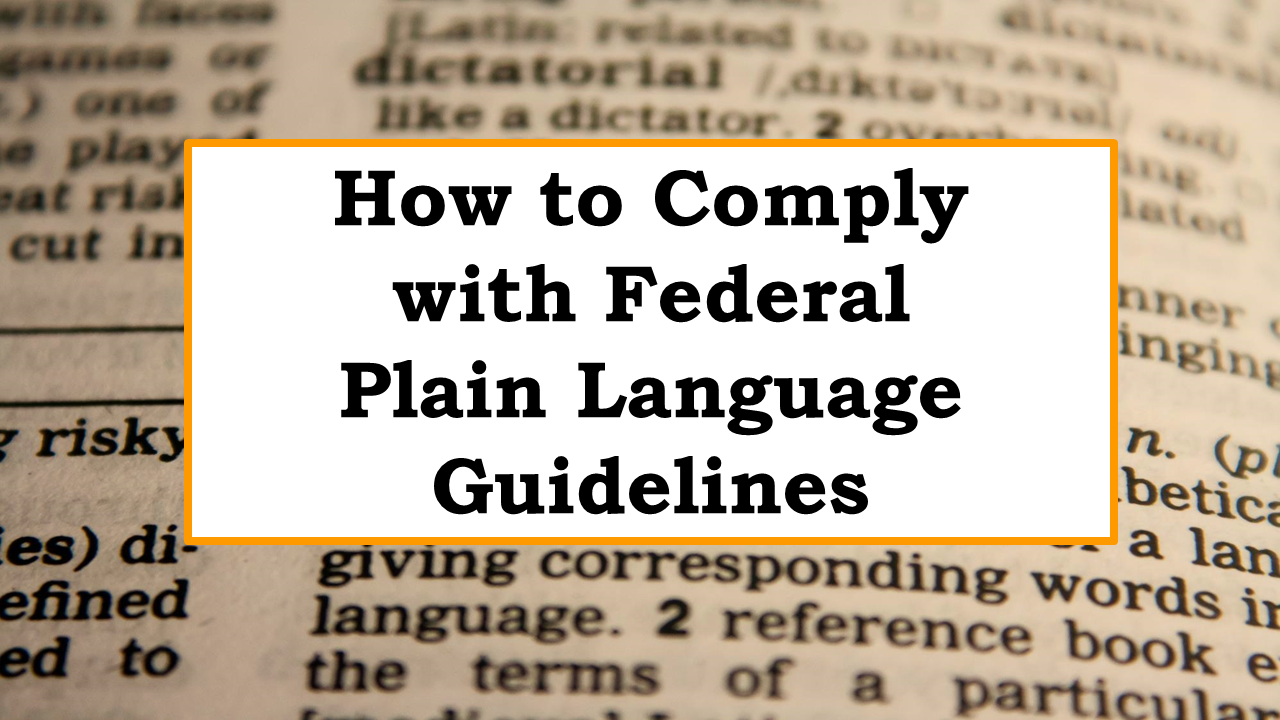Plain writing isn't boring or simple: it's writing with compassion and creativity. Whether you're composing a letter, advertising a hot new product, or creating instructions for applying to a government program, you want to keep your readers engaged. Copywriter Sara Rosinsky has dedicated her career to creating copy that reaches people with the information they need. She offers her insights on how to write for your reader's benefit.
What is your role and how is it connected to plain language?
I’m an advertising copywriter. So my writing always needs to clarify what my clients are offering—the benefits of buying their products or services. I never want to confuse, bore, or exhaust my readers. I need to pull them in and transmit ideas to them quickly and painlessly.
What prompted your interest in plain language?
I’m interested in all language: slang, jargon, curses—you name it. I collect words the way some people collect coins or comic books. But whenever I’m writing for an audience, I try to treat them with compassion. Often, I try to entertain them or give them a nice “ah-ha!” feeling. But above all, I try to be clear in my writing. That way I’m not wasting my reader’s time: I’m giving them the courtesy of efficiency.
How are readability and plain language related?
Plain language improves readability, and that’s my goal.
I think of writing as a journey I’m taking my reader on. If I litter the path with long convoluted sentences and esoteric buzzwords, I’m making the reading-road bumpy and treacherous. My poor reader will stumble and maybe need to retrace their steps. I use plain language to make the reading path smooth.
What are some factors that indicate a need to write in plain language?
I think poetry or poetic prose is the only place where ambiguity is appropriate. (And honestly, I don’t have a lot of patience for that kind of writing.) Almost always, you want to be clear. You want to reduce confusion and crank up the comprehension. You want to connect with your reader.
What’s the most important—yet simple—change professionals can make to consumer-facing documents to improve understanding?
Hmmm. I can only choose one? I suppose I’d recommend replacing the passive voice with the active voice wherever possible.
Where will consumers commonly encounter the most confusing language?
Legal documents are the most notoriously arcane, long-winded, and confusing. On the internet, I probably click “Accept” three times a day without bothering to read what I’m agreeing to. If I were to carefully read every legal document I encounter, I’d never have time to sleep.
What’s the biggest danger to consumers if they don’t understand what is being communicated to them?
In short, they can be suckered. They might agree to what they shouldn’t agree to. They might lose money or inadvertently give away their rights or property.
Beyond writing with simpler words and shorter sentences, what else can professionals do to communicate better for the public’s benefit?
Write like a friendly, polite person speaks. Too often, writers try to put on airs, and they end up sounding like stuffy, old-fashioned, condescending show-offs. Stop trying to highlight how erudite you are and instead treat your reader with kindness and humanity.
What’s one piece of advice that you would offer to help a professional start using plain language?
Read your writing aloud as if you are a real human being standing in front of another real human being. Do you sound accessible and likable? Or do you sound like a pompous 18th-century orator? (You know which one’s better.)
About Sara Rosinsky
Sara Rosinsky is an independent advertising copywriter working under the banner of Shiny Red Copy. Her book, Unflubbify Your Writing: Bite-Sized Lessons to Improve Your Spelling, Punctuation, and Grammar, helps people navigate our tricky language, with all its soundalike and lookalike words, weird spellings, and impossible punctuation and grammar rules. Every lesson is brief, entertaining, and memorable, and it’s Sara’s hope that readers will become more confident in writing and get to enjoy it the way she does. You can find her on LinkedIn and the platform formerly known as Twitter.
About WordRake and International Plain Language Day
Plain Language experts Cheryl Stephens and Kate Harrison Whiteside created International Plain Language Day on October 13, 2011 to celebrate the first anniversary of the signing of the Plain Language Act in the United States. Since then, plain language enthusiasts take time each year to celebrate the gains the movement has made.
In October 2022, WordRake celebrated Plain Language Day by releasing their new Simplicity editing mode to help comply with plain language laws. As firm believers in the importance of clear communication, WordRake celebrates October 13th by highlighting experts and leaders in the plain language field. To see how WordRake can help you simplify your writing, take a 7-day free trial today!






